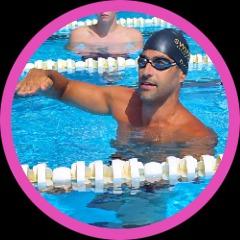⭐
🔥
Jan 24 • 💬 Discussions
Is Your Swimmer Missing Out And Getting Left Behind?
Every swimmer visualizes, even if they don’t realize it.
🌟 Dreaming about standing on the podium, gold medal in hand?
😬 Dreading how tough tomorrow morning’s practice might be?
That’s visualization.
But here’s the thing—most swimmers do it without structure. And when visualization is random, it doesn’t help them swim faster or perform under pressure.
Want proof that structured visualization works?
Look at Adam Peaty, one of the greatest breaststrokers of all time. His preparation for the Rio Olympics was next-level.
For ten months before the Games, Adam used audio from a previous World Championship to mentally rehearse the moment he feared most: walking out to the pool for the Olympic final.
🎙️ He practiced hearing the announcer call his name for lane four.
🔥 He practiced feeling the pressure of being the favorite.
💪 And he practiced swimming his race—again and again in his mind.
By the time he stood on that pool deck in Rio, he’d done it hundreds of times. He wasn’t overwhelmed. He wasn’t doubting himself.
He was ready.
That’s the power of structured visualization.
✔️ It turns pressure into confidence.
✔️ It takes the fear out of big moments.
✔️ It allows swimmers to let their training shine when it matters most.
And here’s the exciting part: your swimmer can use this same tool. 🎯 They’re already visualizing anyway—so why not help them use it the right way?
I teach competitive swimmers a simple, step-by-step process to build visualization skills that work. It’s easy to learn, takes just minutes a day, and can make a huge difference in how they perform under pressure.
If you’re tired of watching your swimmer struggle with nerves or underperform in competition, let’s talk.
👇 If we haven't met online or in person yet, click below to schedule a 15-minute call so we can get to know each other.
Your swimmer works hard in the pool.
🏊 Let’s make sure their mind is working for them, not against them.
See you at the pool,
David Karasek
14
1 comment

skool.com/mindgym-for-athletes-2175
This group will be closed on April 28, 2025. If you're interested in my paid program or our swim camps, email me at [email protected]
Powered by





